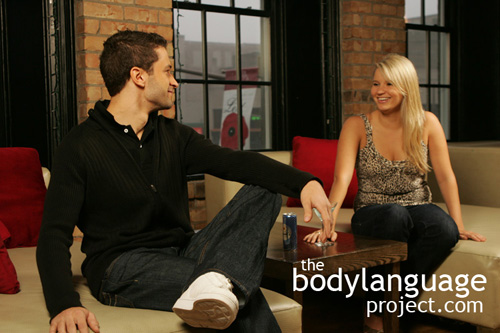This body position occurs as one leg is bent, oriented horizontally and pulled over the opposite knee, to form the number four. Hence the name, the figure four leg cross. It is more or less an open posture and should be taken as a mild version of the crotch display which we saw in the section on leg spreading. This posture is milder because it doesn’t fully expose the crotch because the crossed leg partially blocks the genitals from view. This again, is another one of the cues that where it’s useful to picture our targets as being nude. In essence this is the gentleman’s version of the crotch display. Women aren’t normally seen in this posture, but since pants have become more popular, it does tend to happen more often lately, than it has in the recent past. The figure four tells us that a person is relaxed, youthful (mature gentleman are seen with a full leg cross where the legs end up parallel to one another) and dominant.
The figure four seating position can be close off entirely by placing each hand on the shine so as to lock the leg in place. This posture indicates that someone is extremely stubborn and most likely apt to reject opinions of others. The person is also highly opinionated in most every way and may lead you into disagreement at every turn. The figure four hand lock is stronger as a signal if it is accompanied by negative facial expressions, scowls, or frowns. If selling an idea or product, it might be best to drop the pitch altogether and seek more agreeable company unless you are comfortable using extreme tact or are skilled at building relationships quickly.




